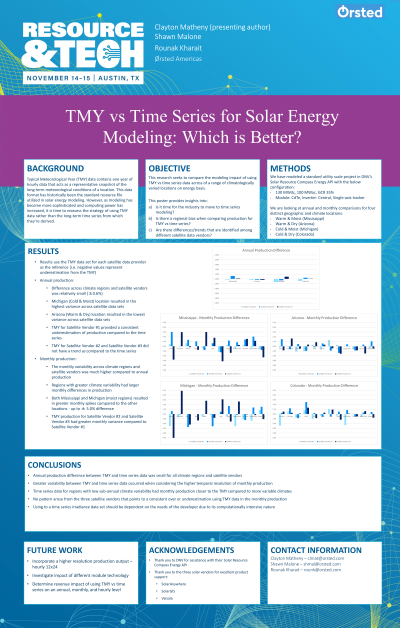Solar & Energy Storage: P50 Bias Update
TMY vs Time Series for Solar Energy Modeling: Which is Better?
Tuesday, November 14, 2023
4:15pm - 5:15pm CST

.jpg)
Clay Matheny
Senior Energy Analyst
Orsted Americas
Chicago, Illinois
Presenter(s)
Presentation Description: Typical Meteorological Year (TMY) data contains one year of hourly data that acts as a representative snapshot of the long-term meteorological conditions of a location. This data format has historically been the standard resource file utilized in solar energy modeling. However, as modeling has become more sophisticated and computing power has increased, it is time to reassess the strategy of using TMY data rather than the long-term time series from which they’re derived. This research seeks to compare the modeling impact of using TMY vs time series data across a range of climatologically varied locations on energy basis. A satellite data provider will be selected for modeling using both fixed-tilt and tracking for a single design configuration. The objective is to determine how these data types (TMY vs time series) affect energy production to help developers make the best financial decision possible for their projects.
Learning Objectives:
- Describe the benefit and downside of using both TMY and time series data for solar energy modeling
- Conduct a solar energy simulation using time series data rather than the industry standard TMY data.

